Growing Thyme Indoors doesn’t have to be a daunting task! Imagine fresh, fragrant thyme readily available right in your kitchen, ready to elevate your culinary creations. No more last-minute trips to the grocery store or settling for dried herbs that lack that vibrant, fresh flavor.
Thyme, with its rich history dating back to ancient Egypt where it was used for embalming, and ancient Greece where it symbolized courage, has long been cherished for its medicinal and culinary properties. For centuries, people have relied on this versatile herb, and now, you can easily cultivate it within the comfort of your own home.
But why should you bother with the effort? Well, for starters, having fresh thyme on hand is a game-changer for any home cook. Beyond the culinary benefits, growing thyme indoors offers a therapeutic connection to nature, even in the smallest of spaces. It’s a simple, rewarding project that can brighten your home and your meals. Plus, let’s be honest, who doesn’t love the satisfaction of nurturing something from seed to harvest? In this article, I’ll share my favorite DIY tricks and hacks to ensure your indoor thyme thrives, regardless of your gardening experience. Get ready to unleash your inner gardener and enjoy the delightful aroma and flavor of homegrown thyme all year round!
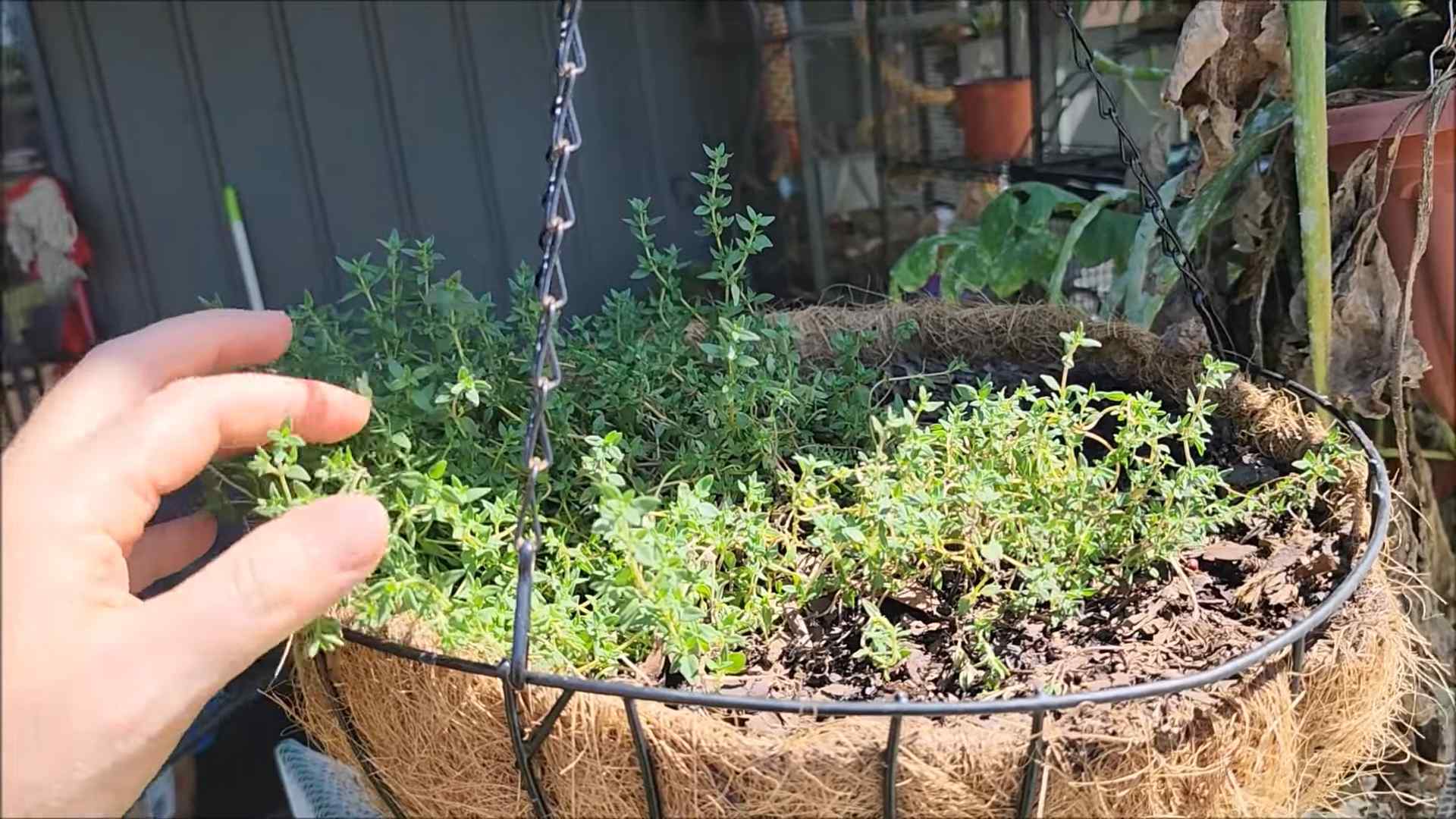
Growing Thyme Indoors: A Beginner’s Guide to a Thriving Herb Garden
Okay, so you want to grow thyme indoors? Awesome! I’m a huge fan of having fresh herbs right at my fingertips, and thyme is a fantastic choice. It’s fragrant, versatile in the kitchen, and surprisingly easy to grow indoors with a little know-how. Let’s dive into how you can create your own little thyme haven inside your home.
Choosing the Right Thyme Variety
First things first, not all thyme is created equal! While most varieties will grow indoors, some are better suited than others. Here are a few of my favorites:
* **English Thyme (Thymus vulgaris):** This is your classic, all-purpose thyme. It has a strong, earthy flavor and is perfect for cooking. It’s also relatively compact, making it ideal for indoor containers.
* **Lemon Thyme (Thymus citriodorus):** As the name suggests, this thyme has a delightful lemon scent and flavor. It’s great for teas, desserts, and adding a zesty touch to savory dishes.
* **Creeping Thyme (Thymus serpyllum):** While often used as a ground cover outdoors, creeping thyme can also thrive indoors, especially in hanging baskets or containers where it can cascade over the edges. It has a milder flavor than English thyme.
I usually opt for English thyme because of its versatility, but feel free to experiment and see which variety you prefer!
Gathering Your Supplies
Before we get our hands dirty, let’s make sure we have everything we need. Here’s a checklist:
* **Thyme Seeds or Seedlings:** You can start from seeds or buy established seedlings from a nursery. Seedlings are faster and easier, but starting from seeds is more budget-friendly.
* **Potting Mix:** Don’t use garden soil! It’s too heavy and doesn’t drain well. Instead, choose a well-draining potting mix specifically formulated for containers. I like to use a mix that contains perlite or vermiculite to improve drainage.
* **Container:** Select a pot that’s at least 6 inches in diameter and has drainage holes. Thyme doesn’t like to sit in soggy soil. Terracotta pots are a great choice because they allow the soil to breathe.
* **Grow Lights (Optional but Recommended):** While thyme needs sunlight, it can be tricky to provide enough natural light indoors, especially during the winter months. Grow lights can supplement natural light and ensure your thyme gets the energy it needs to thrive.
* **Watering Can or Spray Bottle:** For gentle watering.
* **Small Shovel or Trowel:** For planting.
* **Fertilizer (Optional):** A balanced liquid fertilizer can help boost growth, but it’s not essential.
Planting Your Thyme
Okay, let’s get planting! Whether you’re starting from seeds or seedlings, the process is pretty straightforward.
Planting from Seeds:
1. **Prepare the Pot:** Fill your container with potting mix, leaving about an inch of space at the top. Gently pat down the soil.
2. **Sow the Seeds:** Sprinkle the thyme seeds evenly over the surface of the soil. They’re tiny, so don’t worry about spacing them perfectly.
3. **Cover Lightly:** Cover the seeds with a very thin layer of potting mix – just enough to barely cover them.
4. **Water Gently:** Use a spray bottle to mist the soil thoroughly. You want to keep the soil moist but not soggy.
5. **Provide Light and Warmth:** Place the pot in a warm, sunny location or under grow lights. Thyme seeds need light to germinate.
6. **Be Patient:** Germination can take anywhere from 14 to 21 days. Keep the soil consistently moist during this time.
Planting Seedlings:
1. **Prepare the Pot:** Fill your container with potting mix, leaving about an inch of space at the top.
2. **Create a Hole:** Dig a hole in the center of the pot that’s large enough to accommodate the root ball of the seedling.
3. **Remove the Seedling:** Gently remove the seedling from its nursery container. If the roots are tightly bound, gently loosen them with your fingers.
4. **Place the Seedling:** Place the seedling in the hole, making sure the top of the root ball is level with the surrounding soil.
5. **Fill and Pat:** Fill in the hole with potting mix and gently pat down the soil around the seedling.
6. **Water Thoroughly:** Water the seedling thoroughly until water drains out of the bottom of the pot.
Caring for Your Indoor Thyme
Now that your thyme is planted, it’s time to learn how to keep it happy and healthy.
Light:
Thyme needs at least 6 hours of sunlight per day. If you don’t have a sunny window, use grow lights to supplement natural light. Place the lights about 6-12 inches above the plants. I usually keep my grow lights on for about 12-14 hours a day.
Watering:
Thyme is drought-tolerant and doesn’t like to be overwatered. Allow the soil to dry out slightly between waterings. When you do water, water thoroughly until water drains out of the bottom of the pot. Avoid getting the leaves wet, as this can lead to fungal diseases. I usually water my thyme about once a week, but it depends on the humidity and temperature in my home.
Temperature:
Thyme prefers temperatures between 60°F and 70°F (15°C and 21°C). Avoid placing your thyme near drafts or heat sources.
Fertilizing:
You don’t need to fertilize thyme often. If you want to give it a boost, use a balanced liquid fertilizer diluted to half strength every few weeks during the growing season (spring and summer).
Pruning:
Pruning is essential for keeping your thyme bushy and productive. Regularly trim the stems to encourage new growth. You can also pinch off the flower buds to prevent the plant from going to seed, which can reduce its flavor. I usually prune my thyme every few weeks.
Pest Control:
Thyme is relatively pest-resistant, but it can occasionally be affected by aphids or spider mites. If you notice any pests, try spraying the plants with a strong stream of water or using an insecticidal soap.
Harvesting Your Thyme
The best part of growing your own thyme is, of course, harvesting it! You can start harvesting thyme once the plants are about 6 inches tall.
1. **Choose Your Stems:** Use sharp scissors or pruning shears to cut off stems.
2. **Cut Above a Leaf Node:** Cut the stems just above a leaf node (the point where leaves grow from the stem). This will encourage new growth.
3. **Harvest Regularly:** Regular harvesting will keep your thyme bushy and productive.
4. **Use Fresh or Dried:** You can use thyme fresh or dry it for later use. To dry thyme, hang the stems upside down in a cool, dry place until they are brittle. Then, crumble the leaves and store them in an airtight container.
Troubleshooting
Even with the best care, you might encounter some problems. Here are a few common issues and how to fix them:
* **Yellowing Leaves:** This could be a sign of overwatering, underwatering, or nutrient deficiency. Check the soil moisture and adjust your watering accordingly. If the soil is dry, water thoroughly. If the soil is soggy, let it dry out before watering again. If you suspect a nutrient deficiency, try fertilizing with a balanced liquid fertilizer.
* **Leggy Growth:** This is usually caused by insufficient light. Move your thyme to a sunnier location or use grow lights.
* **Mold or Mildew:** This is often caused by poor air circulation or overwatering. Improve air circulation by spacing your plants further apart and avoid getting the leaves wet when watering. If you see mold or mildew, remove the affected leaves and spray the plants with a fungicide.
* **Slow Growth:** This could be due to a variety of factors, including insufficient light, poor soil, or nutrient deficiency. Make sure your thyme is getting enough light, is planted in well-draining potting mix, and is fertilized regularly.
Repotting Your Thyme
Eventually, your thyme will outgrow its container. When this happens, you’ll need to repot it into a larger pot.
1. **Choose a New Pot:** Select a pot that’s a few inches larger in diameter than the current pot.
2. **Prepare the Pot:** Fill the new pot with potting mix, leaving about an inch of space at the top.
3. **Remove the Thyme:** Gently remove the thyme from its current pot. You may need to loosen the soil around the edges of the pot to make it easier to remove.
4. **Loosen the Roots:** Gently loosen the roots of the thyme plant.
5. **Place the Thyme:** Place the
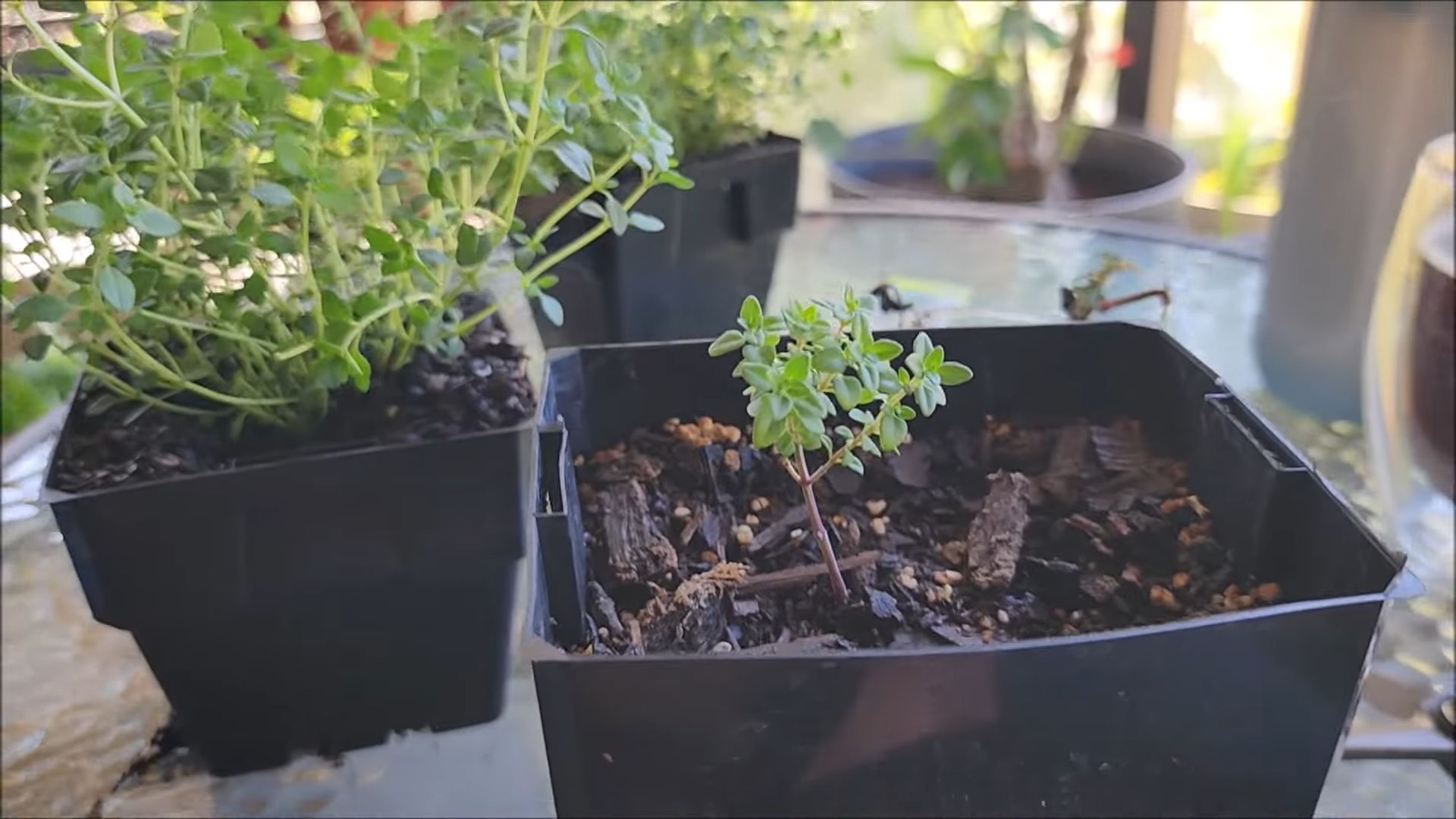
Conclusion
So, there you have it! Growing thyme indoors is not only achievable but also incredibly rewarding. Imagine having fresh, fragrant thyme readily available to elevate your culinary creations, no matter the season. Forget those sad, wilted sprigs from the grocery store; with a little effort, you can cultivate a thriving thyme plant right on your windowsill.
This DIY trick is a must-try for several compelling reasons. First and foremost, it grants you access to a constant supply of fresh thyme, bursting with flavor and aroma that far surpasses anything you can buy pre-packaged. Secondly, it’s a sustainable and eco-friendly way to enjoy your favorite herb, reducing your reliance on commercially grown produce and minimizing your carbon footprint. Finally, it’s a surprisingly simple and satisfying project that connects you with nature and adds a touch of greenery to your indoor space.
But the beauty of growing thyme indoors lies in its versatility. Feel free to experiment with different varieties of thyme, such as lemon thyme for a citrusy twist or creeping thyme for a more ornamental display. You can also explore different container options, from classic terracotta pots to repurposed jars or even a dedicated herb garden planter. Consider companion planting your thyme with other herbs like rosemary or oregano, creating a fragrant and functional mini-garden.
Don’t be afraid to tweak the process to suit your specific environment and preferences. If you live in a particularly sunny area, you might need to provide some afternoon shade to prevent your thyme from drying out. Conversely, if your home is naturally dark, consider supplementing with a grow light to ensure your thyme receives adequate illumination. The key is to observe your plant closely and adjust your care routine accordingly.
We wholeheartedly encourage you to embark on this rewarding journey of growing thyme indoors. It’s a simple yet profound way to enhance your cooking, beautify your home, and connect with the natural world. And most importantly, we want to hear about your experiences! Share your tips, tricks, and triumphs in the comments below. Let’s create a community of indoor thyme enthusiasts and inspire others to discover the joys of homegrown herbs. What are you waiting for? Get your hands dirty and start growing your own thyme today! You’ll be amazed at the difference fresh, homegrown thyme makes in your favorite dishes.
Frequently Asked Questions (FAQ)
Q: What kind of thyme should I grow indoors?
A: While many varieties of thyme can be grown indoors, common thyme (Thymus vulgaris) is generally the easiest and most readily available. Lemon thyme (Thymus citriodorus) is another popular choice, offering a delightful citrusy aroma and flavor. Creeping thyme (Thymus serpyllum) can also be grown indoors, but it tends to spread more and may require a larger container. Ultimately, the best type of thyme to grow depends on your personal preferences and the space you have available. Experiment with different varieties to discover your favorite!
Q: What kind of soil is best for growing thyme indoors?
A: Thyme thrives in well-draining soil that is slightly alkaline. A good potting mix for thyme is a combination of equal parts potting soil, perlite, and coarse sand. This mixture provides adequate drainage and aeration, preventing the roots from becoming waterlogged. Avoid using heavy, clay-based soils, as they can retain too much moisture and lead to root rot. You can also amend your potting mix with a small amount of lime to increase the pH level.
Q: How much sunlight does indoor thyme need?
A: Thyme requires at least six hours of direct sunlight per day to thrive. Place your thyme plant in a south-facing window where it can receive ample sunlight. If you don’t have a south-facing window, a west-facing window can also work. If your home is naturally dark, consider supplementing with a grow light. Position the grow light about 6-12 inches above the plant and keep it on for 12-14 hours per day. Insufficient sunlight can lead to leggy growth and reduced flavor.
Q: How often should I water my indoor thyme plant?
A: Thyme is drought-tolerant and prefers to be watered sparingly. Allow the soil to dry out completely between waterings. When you do water, water thoroughly until water drains out of the bottom of the pot. Avoid overwatering, as this can lead to root rot. Check the soil moisture regularly by sticking your finger into the soil. If the top inch of soil is dry, it’s time to water. During the winter months, when growth slows down, you may need to water even less frequently.
Q: How do I prune my indoor thyme plant?
A: Pruning is essential for maintaining a healthy and productive thyme plant. Prune your thyme regularly to encourage bushier growth and prevent it from becoming leggy. Use sharp, clean scissors or pruning shears to trim the stems back by about one-third. You can also pinch off the tips of the stems to encourage branching. Avoid pruning too heavily, as this can stress the plant. The best time to prune thyme is in the spring, after the last frost. You can also prune lightly throughout the growing season to harvest fresh thyme for cooking.
Q: How do I harvest thyme from my indoor plant?
A: Harvesting thyme is easy! Simply snip off the stems with scissors or pruning shears. You can harvest thyme at any time, but the flavor is most intense just before the plant flowers. Harvest the stems in the morning, after the dew has dried. You can use the fresh thyme immediately, or you can dry it for later use. To dry thyme, tie the stems together in a bundle and hang them upside down in a cool, dry place. Once the leaves are completely dry, you can crumble them and store them in an airtight container.
Q: My thyme plant is turning yellow. What should I do?
A: Yellowing leaves can be a sign of several problems, including overwatering, underwatering, nutrient deficiency, or pest infestation. Check the soil moisture to determine if you are watering too much or too little. If the soil is consistently wet, reduce your watering frequency. If the soil is bone dry, water thoroughly. If you suspect a nutrient deficiency, fertilize your thyme plant with a balanced liquid fertilizer diluted to half strength. Inspect your plant for pests, such as aphids or spider mites. If you find pests, treat your plant with an insecticidal soap or neem oil.
Q: Can I propagate thyme from cuttings?
A: Yes, thyme can be easily propagated from cuttings. Take a 4-6 inch cutting from a healthy stem, removing the lower leaves. Dip the cut end in rooting hormone and plant it in a pot filled with well-draining potting mix. Keep the soil moist but not soggy. Place the pot in a warm, bright location, but out of direct sunlight. In a few weeks, the cutting should develop roots. Once the roots are established, you can transplant the new thyme plant into a larger pot.
Q: How do I deal with pests on my indoor thyme plant?
A: Indoor thyme plants can be susceptible to pests such as aphids, spider mites, and whiteflies. Regularly inspect your plant for signs of infestation, such as sticky residue, webbing, or visible insects. If you find pests, treat your plant with an insecticidal soap or neem oil. Follow the instructions on the product label carefully. You can also try washing the plant with a strong stream of water to dislodge the pests. For severe infestations, you may need to use a stronger insecticide.
Q: Can I grow thyme indoors year-round?
A: Yes, with proper care, you can grow thyme indoors year-round. Provide your thyme plant with adequate sunlight, well-draining soil, and regular pruning. During the winter months, when growth slows down, you may need to reduce your watering frequency and fertilizing. You may also need to supplement with a grow light if your home is naturally dark. By following these tips, you can enjoy fresh, homegrown thyme all year long.

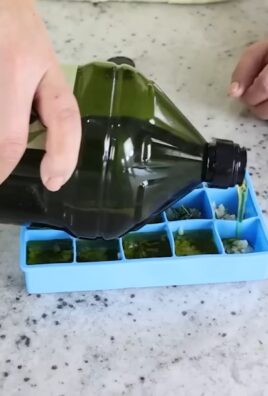
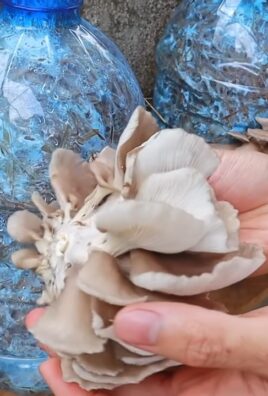
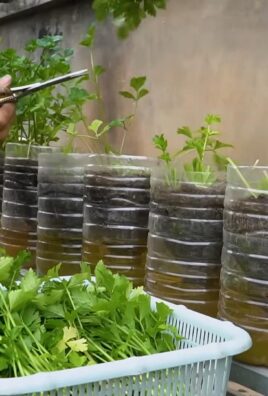
Leave a Comment